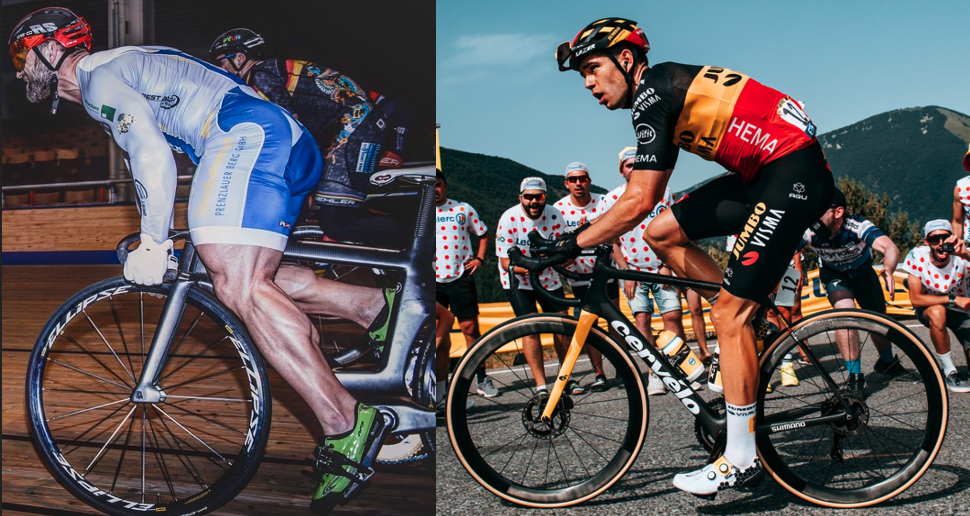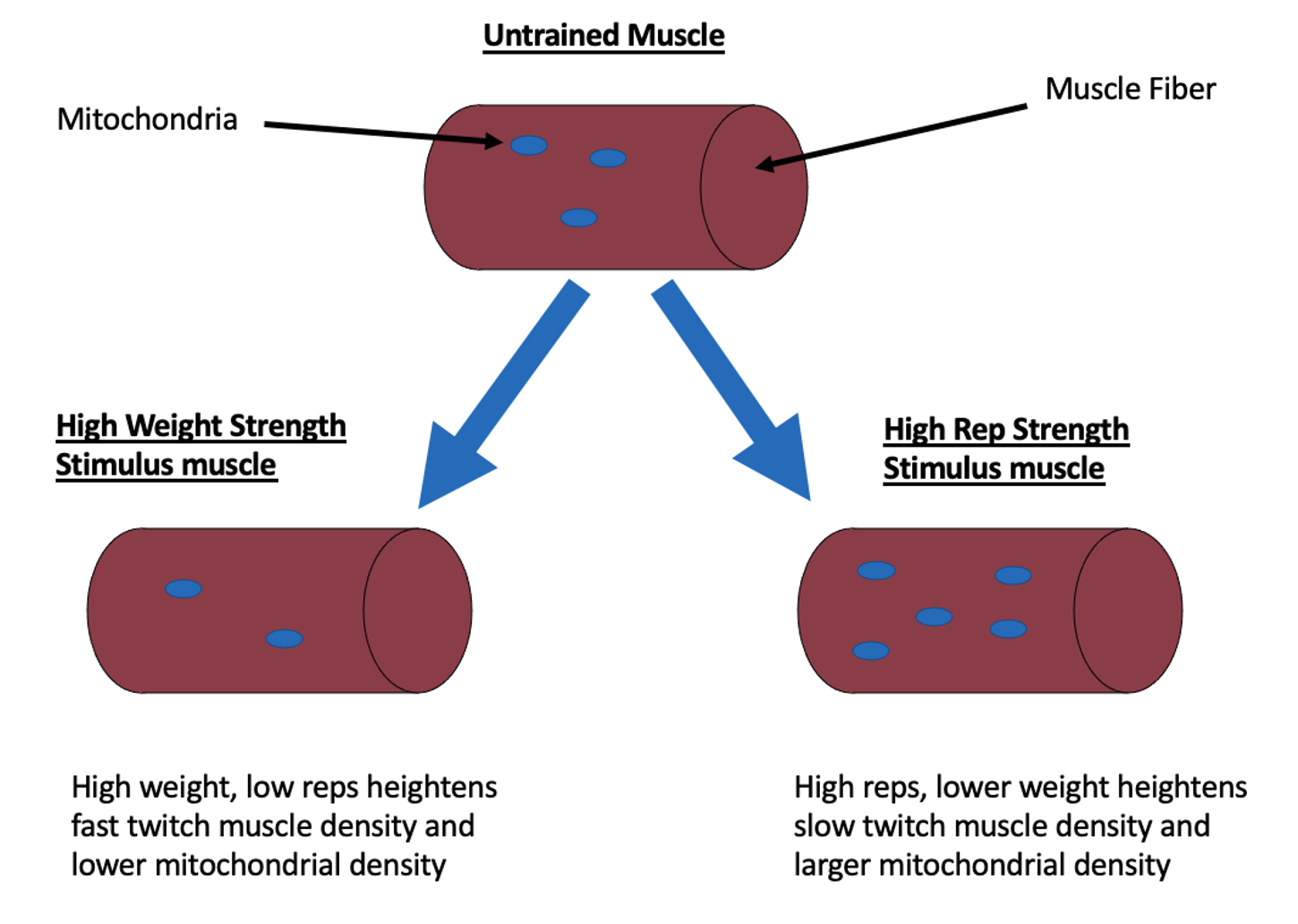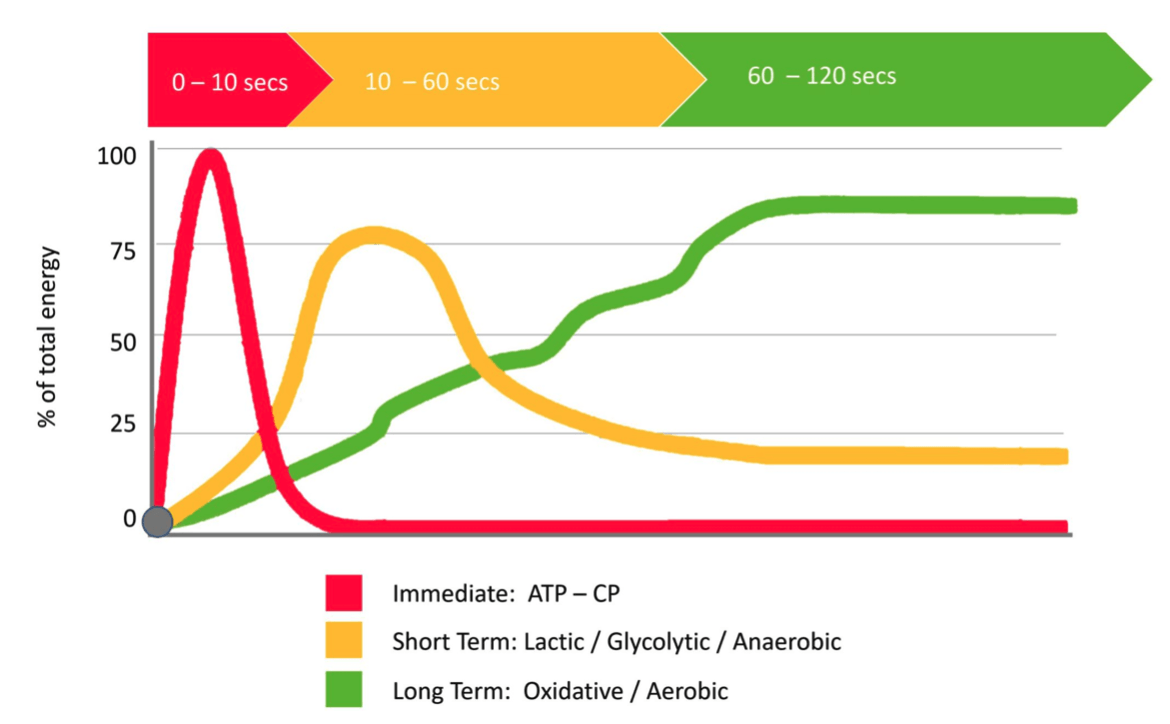Task and Athlete Specific Strength
To strength train properly, it’s crucial to know about the event and the athlete.
Here’s how to identify what to train…
Undoubtably, a significant improvement in performance can be seen with the inclusion of a structured programme – both on and off the bike.
The two main areas that we can structure is knowing what event (or type of riding) you want to do, and what your current physical capabilities are.
These can be identified either very specifically, or broadly dependent upon the time and availability of testing equipment at your disposal (check out our testing page here for further info on what we offer).
I will cover one repetition maximum (1-RM) testing in another article, so please check for that. As a quick explanation I want to know how much my athlete can lift maximally (safely and correctly) for 1 repetition of each major exercise I want to include in their programme.
Major exercises include squats, leg press, split squats whereas assistance exercise examples might be rotational core, calf raises etc... I will estimate these and fine tune over time.
Once baseline strength has been identified, it is possible to then target areas that are going to give a good improvement in performance.
An old tutor, who I now consider a friend once told me ‘There’s no point chasing the mice if there’s elephants in the room’… Or in other words, sort out the big problems before focussing on the smaller one’s.
This article is aimed at athletes who haven't really added strength training into their programme before.
Task-Specific Strength
Defining the parameters of the task that you are training for is crucial. This helps you to understand how to manipulate variables to achieve the best outcome.
For a cyclist, the most effective way is probably to work out the average power output required relative to your maximum.
This can be done by estimating the length of the event: 1-minute, 5-minutes, 20 minutes, 1 hour or 2 hours+. For these events It might be easier to look at the duration of the event, and then the number of peak power outputs throughout (for accelerations or climbs as examples).
Here’s a quick table to make it clearer, and to add some context there are some example events:
There are others such as ultra-endurance (LEJOG, RAAM as examples), however it depends on how they are ridden. They may fall into one of the other categories. It certainly did when I was in charge of strategy and training for my 8-man RAAM team.
Equally, it should be noted that within team races, a sprinter will train differently to a domestique or climber. I would expect a sprinter to lift heavy loads because I want them to produce high power outputs at the end of a stage to win the race.
Now we’ve tried to classify the event, let’s get into some science.
The reason that it’s important to estimate how much power (for the majority of the event) is required compared to maximum is because the more power required, the more maximal strength is important.
The longer event the less power in comparison to maximum is needed. This can determine the amount of load and number of repetitions that are necessary.
As an example, an UCI tour rider won’t ride at their functional threshold power (FTP) throughout the 4-5 hours spent racing in a day.
A good visual example of this is the difference in size of the legs of track sprinters in comparison to UCI World Tour Teams (with the exception of the sprinters to a certain extent). To produce more force which is required in sprint events, more muscle mass and also strength is required. By virtue of being able to produce so much force, a much higher power output can be reached.
However, carrying a large amount of muscle mass for 3 weeks in the Pyrenees is going to require a huge expenditure of energy, over and above that of a 65kg rider, therefore attempting to build extensive muscle in this athlete is 1. Too time intensive, and 2. Unachievable when spending large portions of the day in a catabolic state. An anabolic state (energy surplus, extensive protein and adequate levels of natural anabolic hormones etc…) is required to build extensive muscle mass - all of the examples in brackets are difficult in endurance sports.
That’s not to say one is better than the other – they are both optimal for the event that they compete in.
Credit: Reddit & Wout van Aert
The track athlete requires to use muscle fibers that produce lots of force quickly (these are known as fast twitch, Type II fibers), which also tire (or fatigue) faster than slow twitch Type I muscle fibres.
The endurance athlete requires more focus on muscle fibers that can repeat muscle contractions at the same intensity again and again without getting tired (known as slow twitch, Type I fibres).
Genetically, we have a predisposition towards one type or the other, which is what makes us naturally better at speed or distance events. Through training, we can further emphasize, or even change this distribution to improve our performance in specific event types. See muscle diagram below.
Along with this is how the muscle fibres produce energy. The more energy-producing cells within our muscle fibres (known as mitochondria) there is, the faster we can produce energy to continue performance at the same level of intensity.
These cells take carbohydrate and break them down into glucose. They are then further broken down into a substance known as ATP (adenosine triphosphate). The breakdown of ATP to ADP (adenosine diphosphate) is what our bodies need to produce movement.
Mitochondria are more extensive in slow-twitch Type I fibres (known as the oxidative or aerobic energy system). Fast twitch fibres are able to store more of the substance that helps to replenish ADP to ATP quickly. This substance is known as Creatine Phosphate - you'll no doubt have heard of creatine as a supplement. It helps to fuel hugely intense forms of exercise that require lots of force, like sprint events, by replacing the lost phosphate from ADP back to a more usable ATP molecule very quickly. This energy system is known as the ATP-CP system.
Storage of creatine within muscles is limited and can’t be maintained for very long. This will lead to a reduction in power output and speed eventually, usually around the 10-second mark.
So why doesn’t the body produce more mitochondria to help in sprint events?
This is because the process of energy production by mitochondria is too slow and requires lots of oxygen, so by the time its producing energy, the event is probably over. Think of it as a Diesel engine - it takes a while to warm up, but can go forever. Not many race cars are powered by diesel engines!
The third energy system available to us bridges the gap between immediate energy (ATP-CP system) and long-term energy (Oxidative/Aerobic system). This is where the body uses the bi-product of the breakdown of glucose in moderate intensity exercise (lactic acid) to continue to fuel performance. This is called the Lactic Acid, or Anaerobic energy system.
This happens when you’re consuming as much oxygen as possible, but it’s still not enough to maintain exercise intensity. The waste product of the breakdown of glucose for energy without oxygen to help clear away the bi-product is known as lactic acid.
Generally, this happens when your cycling above your functional threshold power, and it's why an FTP test exists. The purpose of this test is to work out a maximal power output that doesn't require you to dip into your anaerobic (without oxygen) energy system and therefore produce lactic acid, as this isn't sustainable.
You’ll know when you’re using this system because of the burning sensation in your legs when sprinting or climbing hard for a period of time.
Hopefully this graph helps to explain this overlap in energy systems:
Credit: Metrifit.com
Obviously, with using specific training methods, these time frames can be altered to become longer with the short-term energy systems ATP-CP and Lactic, or happen faster with Oxidative.
Athlete-specific strength
Now that the event type is covered, we can focus on training for the athlete.
If you are new to strength training, the aim of the game here is to get strong and develop a good base to work from. For instance, lifting between 1 to 1.5x body weight in a range of multi-joint (or compound) exercises like back squat or deadlift for 2-3 repetitions should be your goal.
To achieve this it can take anywhere from one month to several, depending on your previous training history and how often you put strength training sessions into your weekly plan. 2-3 would be ideal when the season finishes because cycling sessions are automatically shorter. You could do a strength and cycle session in the same day, taking up the same time as a summer ride, possibly.
During the season, replace some (1-2) of the cycling sessions with strength sessions. To make progress, you need to strength train year-round.
As a push (in case you needed it) the vast majority (approx. 95%!) of research on this topic has found a much bigger benefit of concurrent training (mixing cycling and strength training) than cycling alone.
The main benefit of being strong is that because your maximum strength is so large, the effects of an activity on your body are much less, so recovery is faster and performance can be maintained for longer. Essentially, your efficiency has improved.
Example:
- 2 people weighing 70kg lift a 40kg back pack.
- Person 1 can squat 60kg and person 2 can squat 100kg.
- Person 1 is lifting a load at 67% of their max capacity.
- Person 2 is lifting a load at 40% of their max capacity.
- So the effort required by person 2 is much less.
Once a good base of strength is achieved, you can then start to break up the training to mirror your event.
-----------------
"AS A COACH, I WOULD ALWAYS RECOMMEND TO GET STRONG BEFORE GETTING SPECIFIC – EVEN IF IT MEANS NOT BEING IN GREAT SHAPE FOR THE NEXT EVENT, THAT’S A SACRIFICE THAT SHOULD BE MADE FOR LONG-TERM IMPROVEMENT."
-----------------
I imagine that most people reading this article would participate in endurance rides, such as 2-3 hours and around 50-100km.
To begin with, the aim is to learn good movement patterning, activate other muscle fibres than those used within endurance events and also as a bonus deal with lactate more effectively. To do this, higher repetitions with a resultant lighter load will be more beneficial.
- As a guide, 3 sets of 12 reps at approximately 40% of your 1-Rep Maximum weight to begin with. There should be plenty of reps left in the tank at the end of the set.
As progress is made, it is unlikely that high repetition strength training will have the same level of benefit as it once did. Your slow twitch muscles have started to reach a ceiling in terms of fatigue resistance and you are lifting a heavy weight (relative to your body weight) for a high number or repetitions.
Changing emphasis to a higher load that is moved quickly (as possible) for high power output events is much more effective at developing a better distribution of fast twitch muscle fibres, as well as benefiting from the neuromuscular and tendon developments.
This would be useful to begin with for sprinters, or short events such as criterium's. Equally, this is useful to progress to for trained endurance athletes who have developed their endurance muscle capacity. Activating more muscle fibres in this way means more working muscle to be used. (In case you are wondering, it is a conversion of the now activated Type IIx fibres to more fatigue resistant Type IIA fibres)
- For clarity, I aim for 4 sets of 2-8 reps at approximately 80%+ of your 1-Rep Maximum for strength/power development
In most cases, the exercises can be the same. All that changes is the number of repetitions, sets and therefore the load. The exception to this would be max power cycling events that require you to pull on the handlebars in order to push on the pedals with more force such as track cycling. I would integrate more upper body pulling exercises, too.
In case there is any doubt, concurrent endurance and strength training has been shown to :
Increase cycling speed
Increase power output
Improve cycling economy
Have no detrimental effect onVo2 Max
Strengthen tendons.
Finally, you may experience muscle soreness (known as DOMS, or delayed onset muscle soreness), but this is normal and just how your body helps to show you how much is enough.
In most cases, the amount and severity will reduce after about a month to 6 weeks of consistent training.
~ JC
Got A Question?
We will get back to you as soon as possible.
Please try again later.




